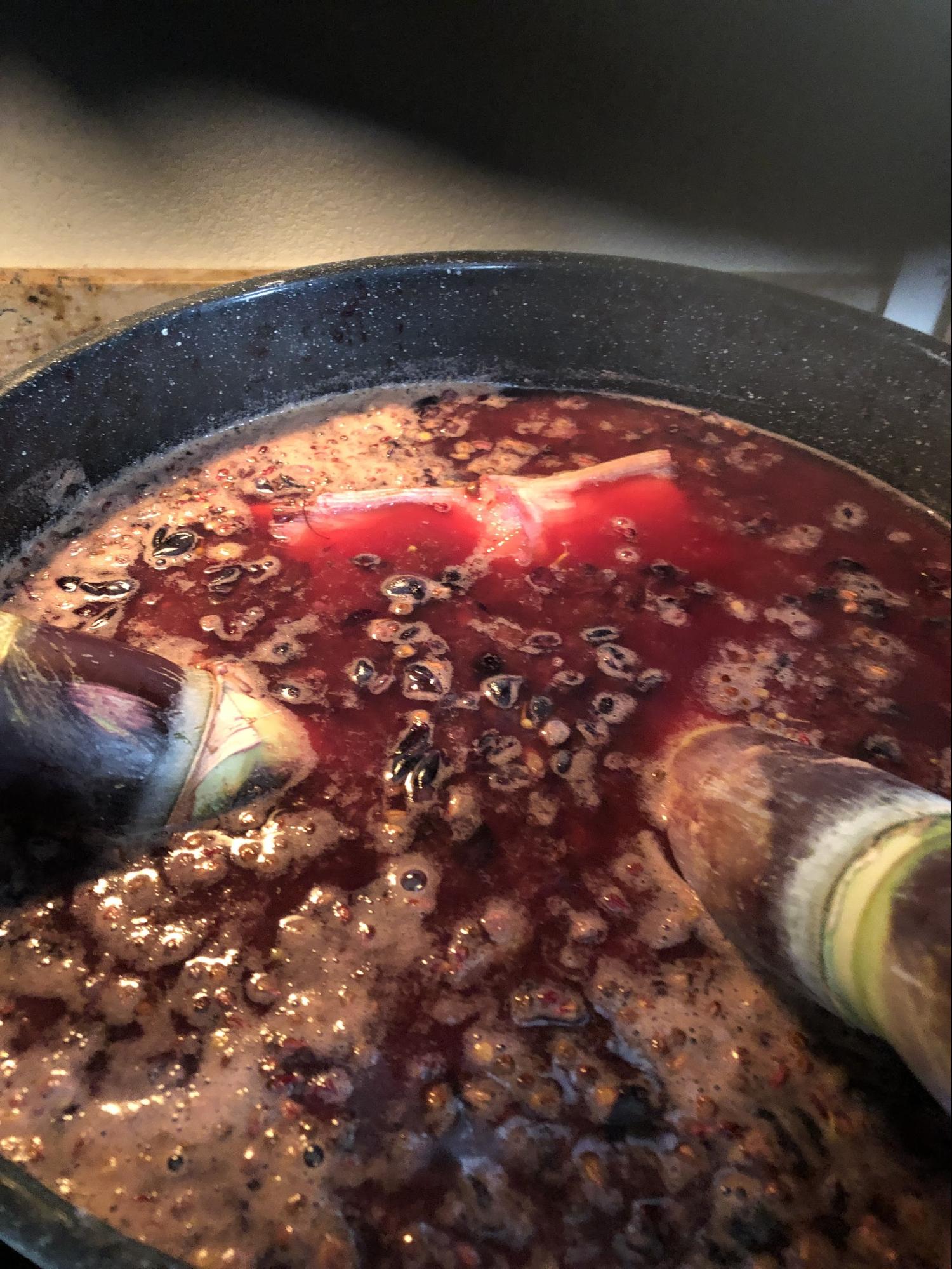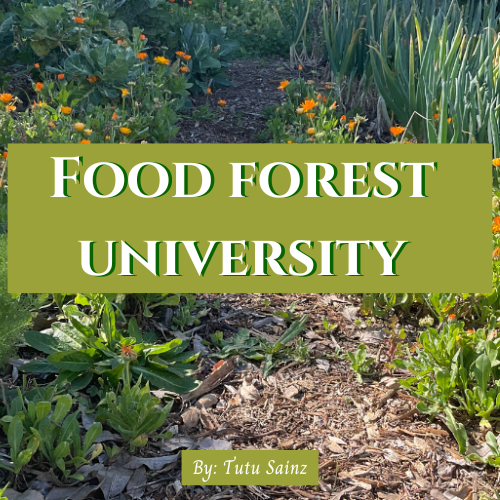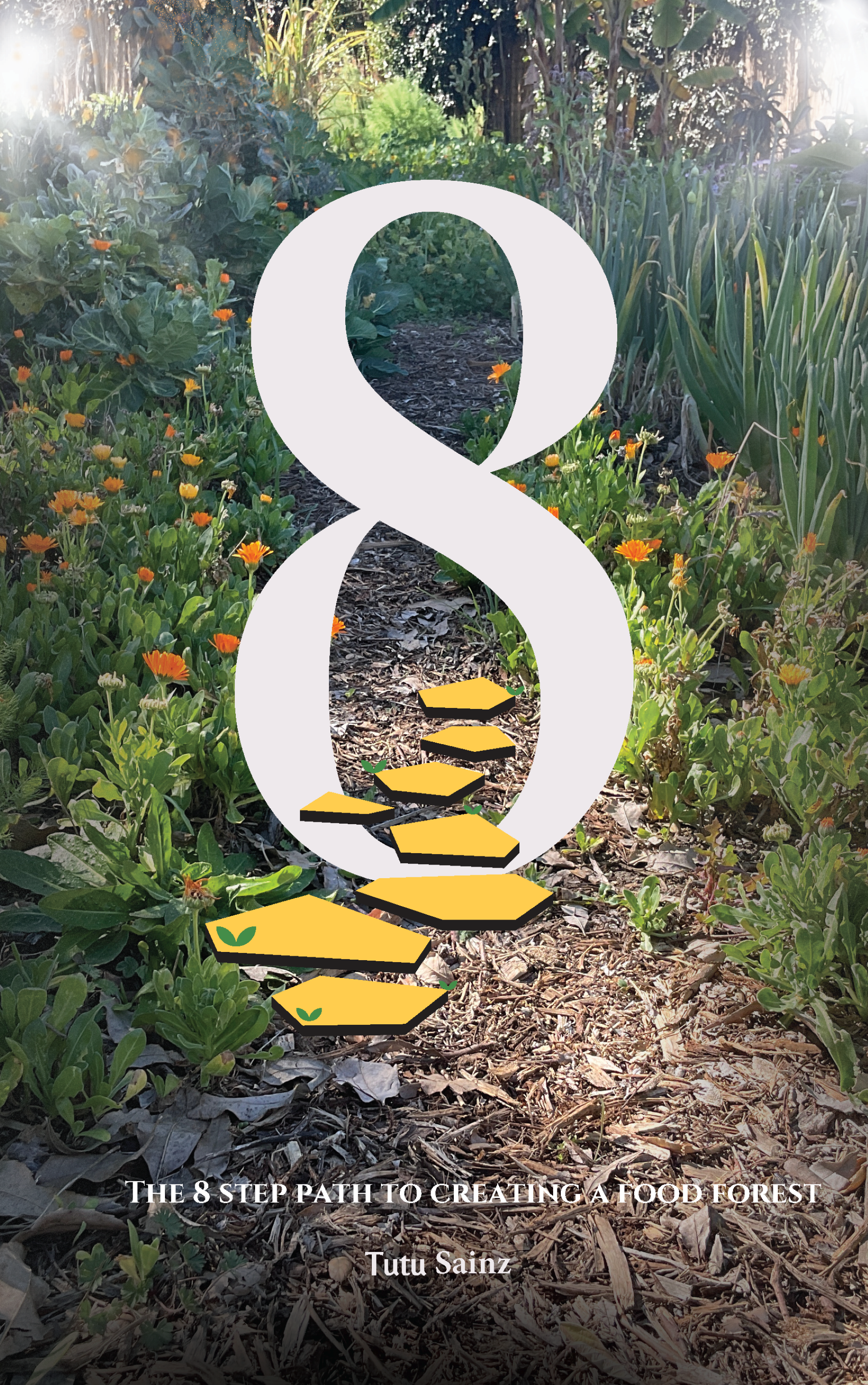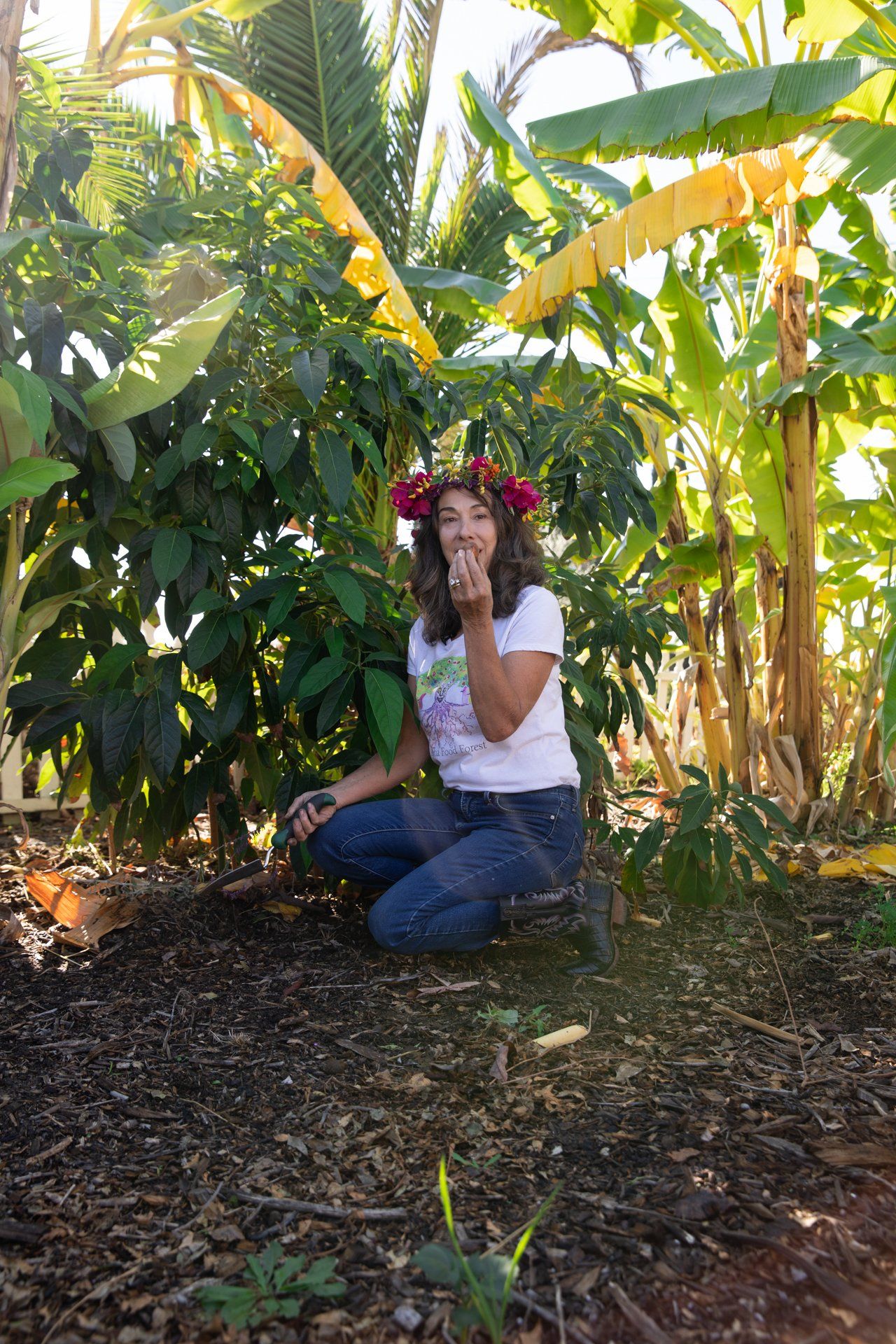Growing Sugar Cane at Aloha Food Forest
Plant of the Month for October - Sugar Cane
Sugarcane or
sugar cane refers to tall tropical
perennial grasses in the genus
Saccharum used to produce
sugar. They like plenty of sunshine and water.
Sugarcane plants form lateral shoots at the base to produce multiple stems, about 2 in in diameter. The sprouts grow into 75% cane stalk, with leafy tops.

Sugarcane is an ancient crop grown around the world! The Persians and Greeks encountered the famous "reeds that produce honey without bees" in India between the 6th and 4th centuries BC. They adopted and then spread sugarcane agriculture. Merchants began to trade in sugar, which was considered a luxurious and expensive spice from India. In the 18th century AD, sugarcane plantations started in the Caribbean, South American, Indian Ocean, Pacific island nations and became a significant driver of massive migrations.
In some regions, people use sugar cane reeds to make pens, mats, screens, and thatch. The young, unexpanded flower head of Saccharum edule (duruka) is eaten raw, steamed, or toasted, and prepared in various ways in Southeast Asia, including Fiji and some island communities of Indonesia.
Here at Aloha Food Forest, we enjoy sugarcane as a snack,
as a stirring stick for sweetening a boiling mixture,
This picture shows a big pot of freshly picked purple grapes boiling with sugarcane pieces used as stirring sticks/mashers to make sweet grape juice.
And we are happy to say we are using sugarcane as a
mulch covering the soil.
Sugarcane is an exciting new source of mulch that is very high in carbohydrates and nitrogen for the soil life and the green plants.
Mow the dry leaves with a mulching lawnmower to create mulch,
and the canes can go through the wood chipper smoothly.
Here is a picture of our Patriot wood chipper and the mulch from one sugar cane.
Nitrogen fixation
Sugarcane varieties are capable of fixing atmospheric nitrogen in association with the bacterium Gluconacetobacter diazotrophicus.
Unlike legumes and other nitrogen-fixing plants that form root nodules in the soil in association with bacteria, G. diazotrophicus lives within the sugarcane's stem’s intercellular spaces.
Carbon fixation
Sugar Cane is one of the most efficient photosynthesizers in the plant kingdom. It is a C4 carbon fixation plant, able to convert up to 1% of incident solar energy into biomass.
History
Sugar cane was among the early crops brought to the Americas by the Spanish and the Portuguese from their fields in the Madeira Islands. Christopher Columbus first brought sugarcane to the Caribbean during his second voyage to the Americas.
Once a significant crop of the United States’ southeastern regions, sugarcane cultivation declined there during the late 20th century and is primarily confined to small plantations in Florida, Louisiana, and southeast Texas in the 21st century.
Sugarcane cultivation ceased in Hawaii when the last operating sugar plantation in the state shut down in 2016.
But woohoo! We can grow it here in Southern California!
Soil
Sugarcane can be grown on many soils ranging from highly fertile, well-drained Mollisols, through heavy cracking Vertisols, infertile acid Oxisols and Ultisols, peaty Histosols, to rocky Andisols.
Sun and Water
Both plentiful sunshine and water supplies increase cane production. Desert countries with good irrigation facilities such as Egypt produce some of the highest-yielding sugarcane-cultivating regions.
Harvesting and Re-Planting
Although some sugarcanes produce seeds, modern stem cutting has become the most common reproduction method. Each cutting must contain at least one bud, and the cuttings are sometimes hand-planted.
Once planted, you can harvest a stand several times; after each harvest, the cane sends up new stalks, called ratoons. Successive crops give decreasing yields, so eventually, you might need to replant new cuttings by planting a cut piece of sugar cane’s nodes in the soil. In a more traditional agriculture type with smaller fields and hand harvesting, like in the French island la Réunion or a backyard food forest, sugar cane is often harvested up to 10 years before replanting.
Recipes
In most countries that cultivate sugarcane, there are several foods and popular dishes derived directly from it, such as:
- Raw sugarcane: chewed to extract the juice
- Sayur nganten: an Indonesian soup made with the stem of trubuk (Saccharum edule), a type of sugarcane.
- Sugarcane juice: This combination of fresh juice, extracted by hand or small mills, with a touch of lemon and ice makes a popular drink, known variously as air tebu, usacha rass, guarab, guarapa, guarapo, papelón, aseer asab, ganna sharbat, mosto, caldo de cana, nước miá.
- Syrup: a traditional sweetener in soft drinks, now primarily supplanted in the US by high fructose corn syrup, which is less expensive due to corn subsidies and sugar tariffs.
- Molasses: used as a sweetener and a syrup accompanying other foods, such as cheese or cookies
- Jaggery: a solidified molasses, for sweetening cooking. Known as gur, gud, or gul in India, is traditionally produced by evaporating juice to make a thick sludge and then cooling and molding it in buckets. Modern production partially freeze dries the liquid to reduce caramelization and lighten its color.
- Falernum: a sweet and slightly alcoholic drink made from sugarcane juice
- Cachaça is the most popular distilled alcoholic beverage in Brazil, a liquor made of the distillation of sugarcane juice.
- Rum: is a liquor made from sugarcane products, typically molasses but sometimes also cane juice, commonly produced in the Caribbean.
- Basi: is a fermented alcoholic beverage made from sugarcane juice produced in the Philippines and Guyana.
- Panela: solid pieces of sucrose and
fructose obtained from the boiling and evaporation of sugarcane juice; a food staple in Colombia and other countries in South and Central America
- Rapadura: a sweet flour that is one of the simplest refinings of sugarcane juice, common in Latin American countries such as Brazil, Argentina, and Venezuela (known as papelón) and the Caribbean.
- Rock candy: crystallized cane juice
















